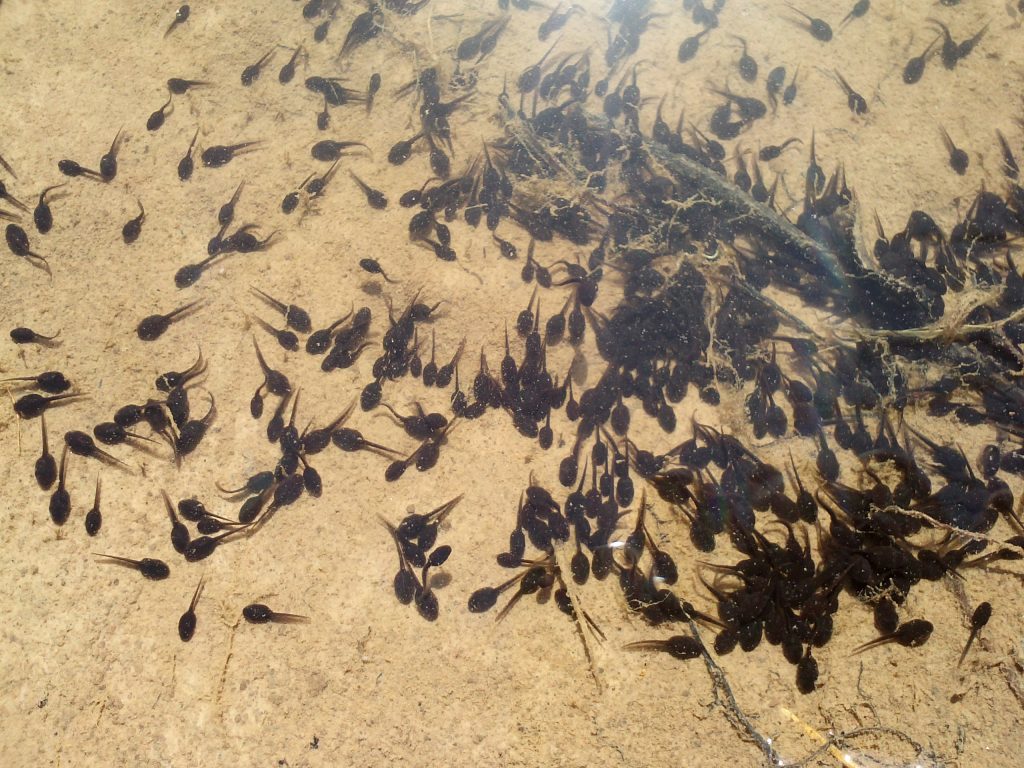Surprise! Semen Is Required
Reproduction seems so obvious to us now. Even if we don’t know the details, we know about the birds and the bees. For humans and an overwhelming number of other species, both female and male contribute stuff that, together, transmogrifies into babies. These days we take our understanding of the baby-making process so much for granted that it’s amusing to look back at the intellectual struggles of early scientists as they tried to figure it all out.
In her must-read book The Ovary of Eve, biologist, educator, and writer Clara Pinto-Correia reveals the absurdity behind the discovery of the facts of life—how men in the 16th through 18th centuries groped, sometimes brilliantly, sometimes not, for answers to burning questions about where babies come from. One part of the saga stands out above the rest because it involves sewing tiny taffeta pants for frogs.
The idea of preformation, or “preprogrammed encasement of successive generations,” reigned during this time. Biblically, preformation was appealing because it held that all humans are related, sharing a common ancestor. Scientifically, preformation was appealing because it seemed to explain the continuity between generations, the similarities between parent and offspring. All egg-laying animals, but also all viviparous (live-born) ones like us, were assumed to come from an egg inside the female, which was equivalent to a seed for plants. Inside that egg was a preformed body with an egg. Inside that egg was a preformed body, and so on back in time, all the way back to Eve. The pull of the egg was strong, and for the earliest supporters of preformation it was easy to believe that every being—present and future—was made at the time of Creation, with the first female containing all the future bodies of her descendants.
Yet with all the ovist emphasis on the female’s role in reproduction, clearly something about the male mattered too. And it was common for preformationists to believe that males contributed a “seminal liquor,” like a procreative potion.
Thanks to Antonie van Leeuwenhoek’s adventurous spirit, history marks him as the first person to actually see “seminal Worms”—as sperms were often called and spelled with that strange way of capitalizing nouns. But despite his 1677 discovery, the ovist point of view remained popular until a new idea started to gain traction. Spermists supposed that we began, preformed, inside each tadpole-shaped gamete in males.
Of course, this seems very revolutionary considering the fact that babies come out of women. And for 18th-century investigations of revolutionary matters in science, we can count on Lazzaro Spallanzani (1729–1799), also known in his day as “Magnifico.” He demonstrated that life does not arise spontaneously from “meat juices.” He also discovered anaerobic ability (the ability to live without air) in some microorganisms, chopped off heads and tails to see if creatures could regenerate them, found that saliva aids digestion, and paved the way for the first brief, succinct, narrowly focused scientific papers (breaking away from early science’s Ahabish obsession with Moby Dick–like treatises). Within the ovist-spermist debate of the time, Spallanzani created perhaps the first frog contraception, crafting little taffeta pants for his male subjects to test whether semen was essential for reproduction.
Spallanzani’s tiny frog pants allowed the animals to assume mating behaviors but blocked the exchange of fluids, whatever those fluids were believed to be. And what happened of course was that no frog babies were made. However, when he collected the semen that the frogs had deposited in their pants and then artificially fertilized the frog eggs, voila, he ended up with new frogs. With that elegant and probably incredibly fun experiment, Spallanzani concluded that semen matters a great deal in baby making.
Naturally, once you’ve made frogs, you’re not going to stop there. So Spallanzani was the first to artificially inseminate a dog, demonstrating again—with his success—that semen matters to reproduction, and strengthening the implication of this discovery for humans.
But the story gets even better.
In spite of these experiments—and a lifetime of scientific thinking and observation and discovery—Magnifico concluded that sperms actually had nothing to do with fertilization. Go ahead and reread that sentence. Sperms didn’t matter! Why, Magnifico, why? If semen is important, why discount the importance of these “little animals,” these “seminal Worms”?
I think if we all use our imaginations we can sympathize. Look at any liquid at hand under a primitive, low-resolution microscope and it’ll be crawling with germs that are difficult to classify as anything but. If water’s got them, but water’s not fertilizing eggs, then what’s so special about sperms? What’s more, it’s completely astounding that a baby is made at all, let alone when you realize that just one out of millions of totally spastic sperms meets up with an egg. Reliving this moment of discovery in our species’ struggle to understand life’s mysteries shows we shouldn’t take our present knowledge for granted. And it transforms something we do tend to take for granted, baby making, into something fresh and extraordinary.


































